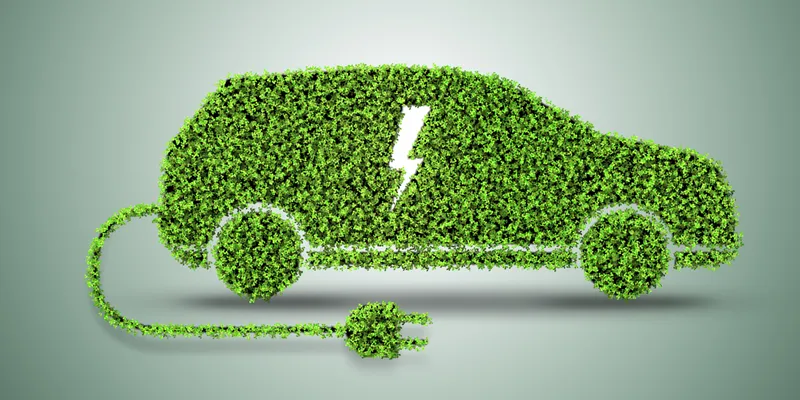What will happen if the Indian government's push for 100% electric mobility by 2030 becomes a reality?
Switching to electric vehicles could save India $60 billion in fuel costs while cutting down 1 gigatonne of carbon emissions. This could help India be among the global leaders in technology and skill development.

The Government of India aspires for a nation with 100 percent electric vehicles by 2030. To support this agenda, some significant steps have been taken through the launch of NEMMP 2013 and FAME 2015, which set aside funds for subsidies and incentives and envision the deployment of 6-7 million EV/HEVs in India by 2020.
The government’s procurement in aggregating demand for public mobility applications has created multiple players. Such demands will encourage companies to invest in electric vehicles. The component industry will hence get mobilised to meet requirements. When a transformation is going to take place, billions of dollars are needed and hence a lot of people need to come together.
From India’s perspective, electric mobility makes a good sense. We have over 200 million vehicles on our roads that will become 300 million by 2030. Our oil import bill which is about US $80 billion could rise to about US $150 billion by 2030. Switching to electric vehicles could save India US $60 billion in fuel costs while cutting down 1 gigatonne in carbon emissions.
This step seems viable to help India be among the global leaders in technology and skill development. But when we notice that the number of EVs sold in India in 2017 was only about 0.3 percent of all vehicles sold, this ground level reality portrays Indian government’s agenda as very ambitious. Analysing major factors will help us understand the real impact of this transition in India.
Change in energy requirements
The number of energy units required in 2016-17 was 1.142 million and energy availability was only 1.135 million units. Over 240 million people of India’s 1.2 billion population still don't have access to electricity. If we had to assume 10 million EVs in India today, the total power consumed in running these electric vehicles would be 3.2 percent of the total power generation capacity in India in 2022.
Though auto companies seem to witness toughest challenge of changing their technology, an even more relevant question is: Where would the vehicles get their energy from, especially in a country where 100 percent electrification is still a goal? The government’s planning of creation of 350 KW of energy by 2030 is expected to cover only 40 percent of total energy requirements. Are we power-sufficient enough to switch to EVs?
Fear of increasing import bill
For running a mid-size sedan for 200,000 km for a period of five years, we import about US $5000 worth of crude oil. If we shift the scenario to a mid-size EV sedan, we will import about US $3000 worth cells. If we were to manufacture in India, we will import metal worth US $1000, which is 75 percent less in value with respect to crude oil. But for this to happen, India needs to become the hub of battery technology that is able to import raw materials and create batteries and related management solutions locally. For this achievement in expertise, India is expected to take about 5-7 years in the niche segment and 8-10 years in the mass segment.
Till that time, the imports of electric powertrain components (70 percent of entire powertrain) will remain high and will surpass our oil expenditure. We will be eventually replacing oil bills with component and technology bills.
Lowering of environmental degradation
Electric vehicles emit about 100 g/km of carbon dioxide for a mid-sized hatchback kind of a vehicle as against 135 g/km for similar vehicle running on gasoline, diesel, or CNG. With the improvement of battery efficiency, the 100 g/km will become 70 g/km in a period of 10 years. Keeping in mind that by 2030, India’s urban population will nearly double, which will lead to about 500 million trips per day, shared-electric-connected vehicles will save 836 million metric tonne of crude and 1 gigatonne of carbon footprints if complete electrification takes place.
But there is one more concern. As many as 200 million vehicles on Indian roads are running on gasoline, diesel, and CNG presently. These vehicles are expected to be scrapped so that the new EVs can come in and take their place. Retrofit options are difficult looking at the difference in ICE and batteries. And duties on hybrids are as high as 43 percent. If the environment is looked at holistically, the fear of uncertain scrappage also needs to be addressed.
Remodelling businesses
The value proposal of an electric vehicle is very different from an IC engine vehicle. Right from raw material value to component value to assembly value, there is a huge difference between the two types of technologies. Based on these differences in value, the business model of a raw material provider, component manufacturer, and OE manufacturer will tend to change. After comparing ICE with EV, raw material suppliers will not only have a greater share in the value chain by 8-10 percent but will also have different offerings due to the inclusion of lithium, nickel, and cobalt.
The component industry will divide into two: one that start manufacturing EV components and other which become solution providers. The share of OEM is expected to decrease in the value chain by 15-17 percent and they will have a choice to venture into in-house battery manufacturing. Moreover, dealerships or service stations will tend to offer very different solutions to customers that will not just buy a car but will buy a connected, autonomous, and electric robot with millions of lines of codes as data. There will be a significant change in revenue models across the various branches of automobile industry. The time, as well as the right environment, will remain crucial.
Fear of exporting jobs
Indian automobile industry employs around 29 million direct as well as indirect people. Majority of these jobs come from the component industry, which have around 700 organised segment players catering to 85 percent of the entire market.
The technology shift from ICE to EV will eliminate approximately 99 percent of mechanical power transmission components, leaving only 1 percent of work to be done. If this takes place in the mass segment at a pace that the government suggests, imagine the number of jobs that will be reduced. With a growing population expected to touch 1.5 billion by 2030, sectors like the automobile which contribute a major share in employment need to slowly but steadily win the race.
Slowing down of investments
India is one of the first countries to skip BS-V and leapfrog to BS-VI directly. For similar transition, Europe took almost nine years, while Indian auto manufacturers have been given 3 years. To tackle this change, investments in the range of INR 60,000 crore are being made from the fuel provider as well as technology leaders to meet this target by April 2020. Moreover, oil companies have invested Rs 30,000 crore from 2005 to 2010 to upgrade their facilities and cater to the changing oil policies.
When we talk about EV adoption, questions that strike us are: What will happen to the huge investments for catering to BS-VI standards and what will happen to the 60,000 petrol pumps that currently exist and are getting upgraded for more refined fuel? Billions of dollars have been spent in creating IC engine infrastructure right from oil fields to transportation to refining to petrol pumps. This investment will need to stop and new investments in charging stations will need to be made. The feasibility of such a halt in money flow needs to be analysed.
After understanding and optimising the various factors that play major roles in EV shift, a good forecast would be 60 percent: 40 percent penetration of ICE technology and EV technology respectively by 2030 with a growth factor of 4 percent for the ICE industry. We cannot move faster than possible without the most essential thing: Traction with reality.
(Disclaimer: The views and opinions expressed in this article are those of the author and do not necessarily reflect the views of YourStory.)







